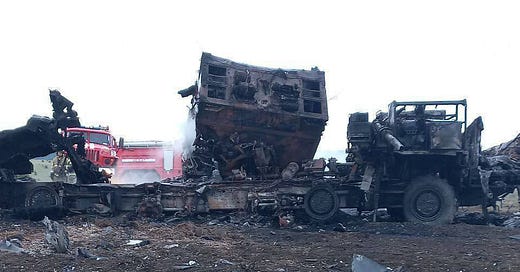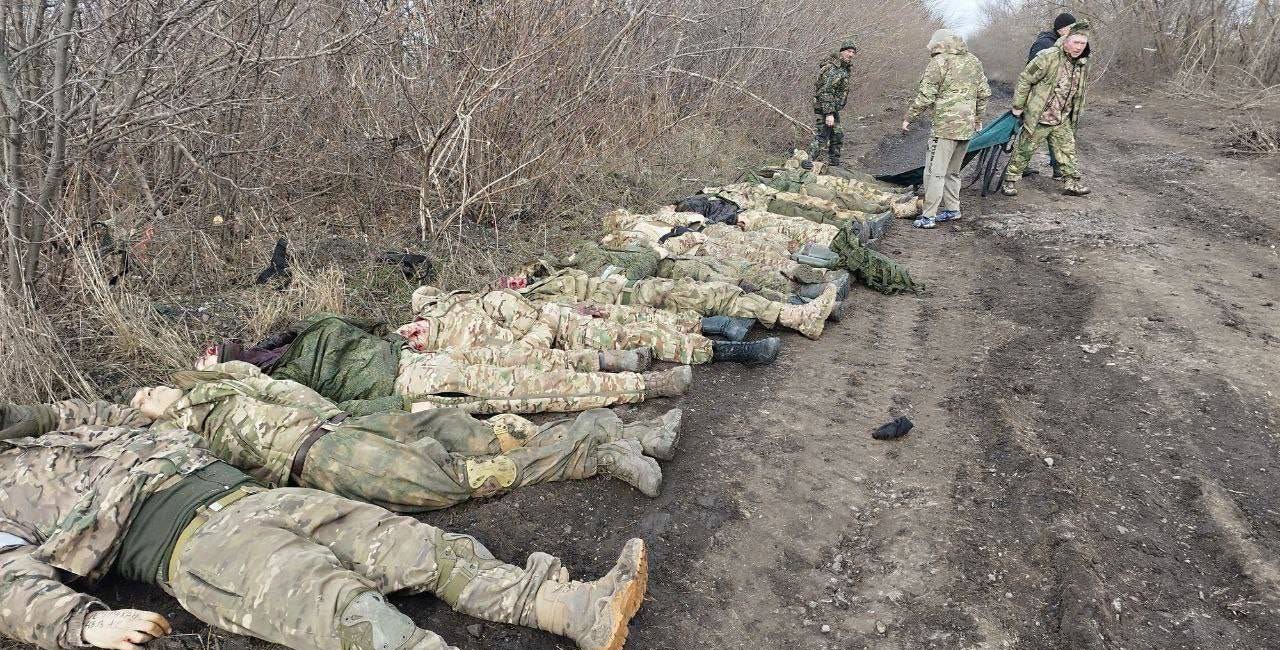Ukraine's ATACMS Raid on Russia's Belbek Air Base Inflicted Maximum Destruction
The Russians appear to have lost an air-defense battery, a fuel depot and two warplanes
On Tuesday night, the Ukrainian army’s Army Tactical Missile System batteries targeted Belbek air base, just outside Sevastopol in Russian-occupied Crimea. The base, which lies 150 miles south of the front line in Kherson Oblast, hosts Russian navy Mikoyan MiG-31 interceptors and air force Sukhoi Su-27 fighters—and is protected by an air force S-400 surface-to-air missile battery.
It’s apparent the Ukrainian batteries fired the longer-range ATACMS they began receiving from the United States back in April. The basic M39 ATACMS Ukraine got from the USA last year ranges just 90 miles under inertial guidance. The newer M39A1, which trades warhead size for a larger rocket motor, ranges 190 miles.
According to one popular Russian military blogger, the Ukrainians fired 10 of the two-ton ATACMS at Belbek. Air-defense radars detected the incoming rockets two minutes before they struck, leaving little time for personnel at the base to seek cover, the blogger claimed. Each M39A1 packs 300 M74 bomblets, meaning 3,000 of the grenade-size submunitions peppered the base.
How much damage did the raid inflict? Possibly as much as it could have.
The blogger claimed the ATACMS destroyed a radar and two launchers belonging to the S-400 air-defense battery—and we have photos confirming it. But they also claimed a MiG-31 and three Su-27s were damaged. Meanwhile, there’s video depicting something at Belbek burning brightly on Tuesday night.
There isn’t yet any photographic evidence from the ground confirming the damage to the warplanes, but there is tantalizing imagery from overhead.
Ukrainian analysis group Frontelligence Insight scrutinized satellite imagery of Belbek from Thursday and identified “three large scorch marks … in the central part of the airfield: two on the military jet apron and one in the fuel depot area.”
“The exact diameter of these marks cannot be determined due to low resolution, but they appear to be approximately over 30 meters in size,” the group reported.
Bear in mind: an ATACMS scatters fist-size submunitions. A 30-meter-wide scorch mark isn’t the result of a bomblet exploding—it’s the result of a bomblet sparking a serious fire or a major secondary explosion.
So it’s apparent that the fuel depot burned down, and so did two aircraft on the apron.
The Ukrainian Center for Defense Strategies assessed that five Su-27s or Sukhoi Su-30s from the 38th Fighter Aviation Regiment recently were operating from Belbek alongside two MiG-31s from the 98th Independent Mixed Naval Aviation Regiment.
According to Frontelligence Insight, typically no more than three of the jets are on the main tarmac at any given time. If the Tuesday ATACMS raid destroyed two of the three jets—either Su-27/30s or MiG-31s or a mix of both types—then the raid inflicted about as much damage as the Ukrainians could have hoped: wrecking part of an S-400 battery, flattening fuel tanks and destroying two of potentially three parked fighters.
Update:
Newer Maxar satllite imagery seems to point to four Russian losses: an Su-27, a Mikoyan MiG-29 and two MiG-31s.
Read more:
The Russians May Have Lost a Record 1,700 Troops in One Day
This weekend, the Russian force in Ukraine may have suffered its bloodiest day. And it’s apparent why. The Russians have opened a new front in their 27-month wider war, adding a northern offensive—or feint, perhaps—to their offensives in the east. More Russia…






